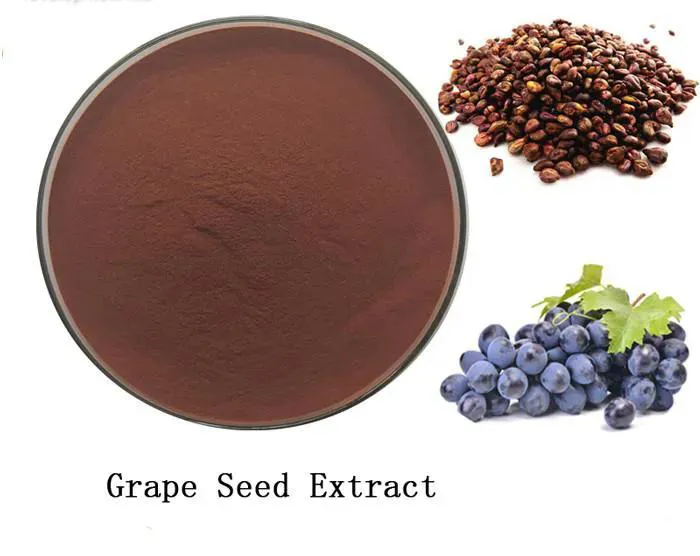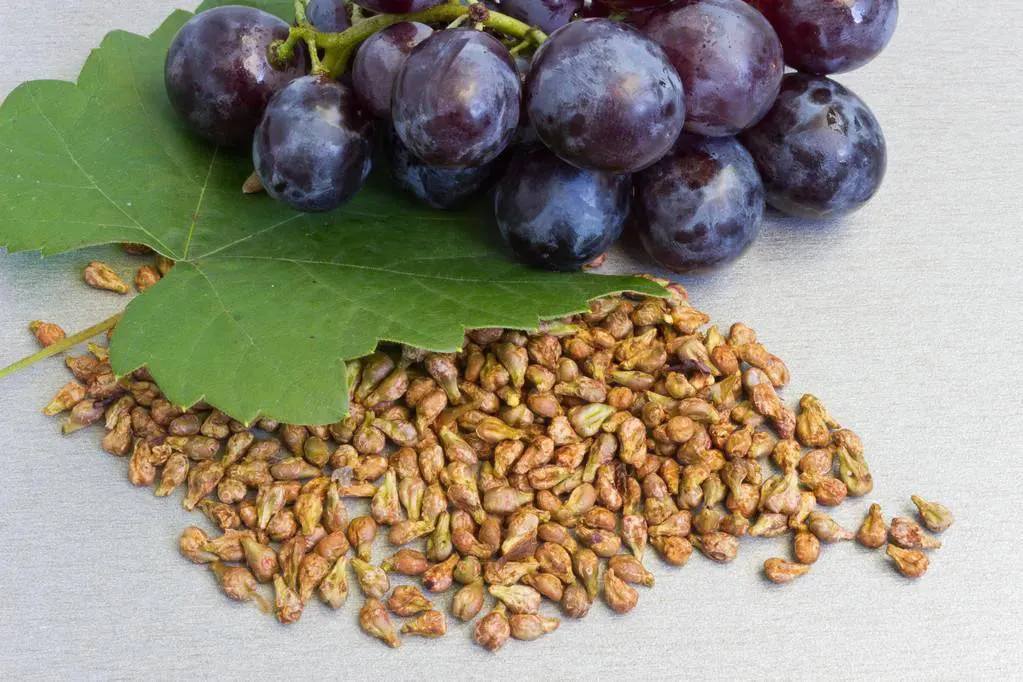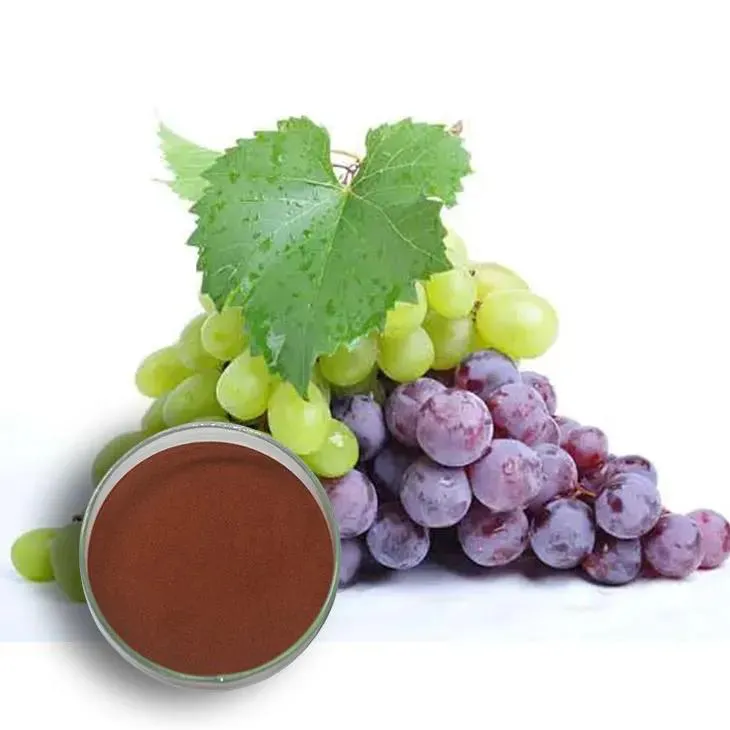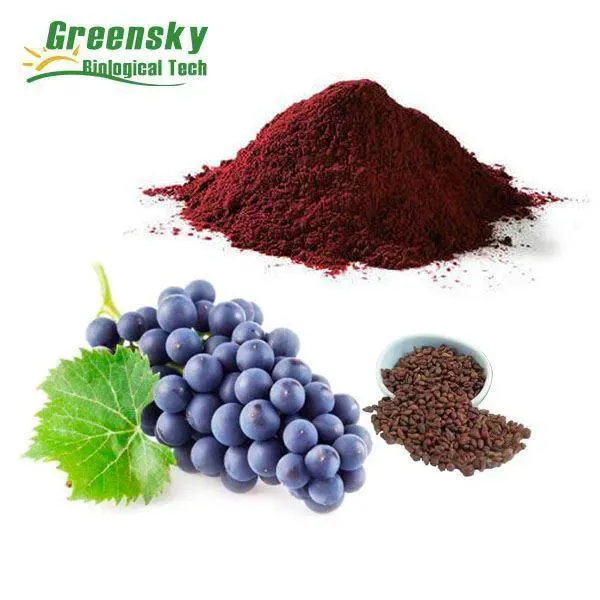- 0086-571-85302990
- sales@greenskybio.com
Navigating the Microvasculature: Grape Seed Extract's Influence on CAD
2024-08-13

1. Introduction
Coronary artery disease (CAD) is a major global health concern, being one of the leading causes of mortality. It is a complex disease that involves multiple pathophysiological processes. While much attention has been focused on the large coronary arteries in CAD, the role of the microvasculature cannot be overlooked. The microvasculature, which includes arterioles, capillaries, and venules, plays a crucial role in maintaining normal cardiac function. Dysfunction in the microvasculature has emerged as a significant factor in the progression of CAD. In recent years, there has been growing interest in natural compounds that may have beneficial effects on CAD, and Grape Seed Extract (GSE) is one such compound that has shown potential in influencing the microvasculature and CAD.

2. The Microvasculature in CAD
2.1 Structure and Function of the Microvasculature
The microvasculature forms an extensive network within the heart tissue. Arterioles are responsible for regulating blood flow into the capillary beds. Capillaries are the sites where the exchange of oxygen, nutrients, and waste products occurs between the blood and the cardiac cells. Venules then collect the blood and return it to the larger veins. This complex network is essential for maintaining the proper metabolic environment of the heart muscle. Any disruption in the structure or function of the microvasculature can lead to decreased perfusion of the heart tissue, which is a key feature in CAD.
2.2 Microvascular Dysfunction in CAD
There are several aspects of microvascular dysfunction in CAD. One of the main problems is endothelial dysfunction. The endothelium, which lines the inner surface of blood vessels, is crucial for maintaining normal vascular tone, preventing thrombosis, and regulating inflammation. In CAD, endothelial cells in the microvasculature may be damaged, leading to reduced production of vasodilators such as nitric oxide. This results in abnormal constriction of the microvessels, reducing blood flow to the heart muscle. Another aspect is microvascular remodeling, where there are changes in the structure of the microvessels, including thickening of the vessel walls and a decrease in the number of capillaries. This further impairs the ability of the microvasculature to deliver oxygen and nutrients to the heart cells.

3. Grape Seed Extract: Composition and Properties
3.1 Chemical Constituents
GSE is a rich source of polyphenols, which are natural compounds with antioxidant properties. The main polyphenols in GSE include proanthocyanidins, flavonoids, and phenolic acids. Proanthocyanidins are large molecules composed of multiple units of flavan - 3 - ols. These compounds are highly potent antioxidants and are thought to be one of the key components responsible for the beneficial effects of GSE. Flavonoids, such as catechins and epicatechins, also contribute to the antioxidant and anti - inflammatory activities of GSE. Phenolic acids, like gallic acid, are also present in GSE and may play a role in its biological activities.
3.2 Antioxidant Activity
The antioxidant activity of GSE is of particular importance. Oxidative stress is a major factor in the development and progression of CAD. Reactive oxygen species (ROS) are produced in excess in CAD, which can damage cells, including endothelial cells in the microvasculature. GSE, with its high content of polyphenols, can scavenge ROS, thereby reducing oxidative stress. This antioxidant action helps to protect the microvascular endothelium from damage, which is a crucial step in maintaining normal microvascular function.

4. Influence of Grape Seed Extract on the Microvasculature in CAD
4.1 Improvement of Endothelial Function
As mentioned earlier, endothelial function is impaired in CAD, especially in the microvasculature. GSE has been shown to improve endothelial function through several mechanisms. One way is by increasing the production of nitric oxide. GSE can stimulate the endothelial nitric oxide synthase (eNOS) enzyme, which is responsible for the synthesis of nitric oxide. Nitric oxide is a powerful vasodilator that helps to relax the smooth muscle cells in the microvessel walls, thereby increasing blood flow. Additionally, GSE can reduce the production of endothelin - 1, a potent vasoconstrictor. By modulating the balance between nitric oxide and endothelin - 1, GSE can improve endothelial - dependent vasodilation in the microvasculature.
4.2 Anti - Inflammatory Effects
Inflammation is another important aspect of CAD. In the microvasculature, inflammatory cells such as macrophages and lymphocytes can accumulate and release cytokines and chemokines, which can further damage the endothelial cells and promote the progression of CAD. GSE has anti - inflammatory properties. It can inhibit the activation of nuclear factor - kappa B (NF - κB), a key transcription factor involved in the regulation of inflammation. By inhibiting NF - κB, GSE can reduce the production of pro - inflammatory cytokines such as interleukin - 6 (IL - 6) and tumor necrosis factor - alpha (TNF - α). This anti - inflammatory action helps to protect the microvasculature from the harmful effects of inflammation.
4.3 Enhancement of Blood Flow
By improving endothelial function and reducing inflammation, GSE can enhance blood flow in the microvasculature. The relaxation of the microvessel walls due to increased nitric oxide production allows for easier passage of blood. Moreover, the anti - inflammatory effects prevent the formation of micro - thrombi and reduce the adhesion of platelets to the endothelial surface, which also contributes to better blood flow. In addition, GSE may have a role in promoting angiogenesis, the formation of new blood vessels. In cases where the microvascular network is damaged in CAD, the ability to stimulate angiogenesis can be beneficial in restoring proper blood perfusion to the heart tissue.

5. Evidence from Studies
5.1 In Vitro Studies
Several in vitro studies have investigated the effects of GSE on microvascular endothelial cells. These studies have shown that GSE can protect endothelial cells from oxidative stress - induced damage. For example, when endothelial cells are exposed to hydrogen peroxide, a source of ROS, treatment with GSE can reduce cell death and maintain normal cell function. In vitro studies have also demonstrated that GSE can inhibit the adhesion of monocytes to endothelial cells, which is an early step in the inflammatory process. This indicates that GSE may have a role in preventing the initiation of inflammation in the microvasculature.
5.2 In Vivo Studies
In vivo animal studies have provided further evidence of the beneficial effects of GSE on the microvasculature in CAD. In animal models of CAD, treatment with GSE has been shown to improve endothelial - dependent vasodilation in the coronary microvessels. This is associated with increased nitric oxide production and reduced oxidative stress. In addition, in vivo studies have shown that GSE can reduce the infiltration of inflammatory cells into the heart tissue and decrease the expression of pro - inflammatory cytokines. Some studies have also suggested that GSE can improve microvascular density, indicating a potential role in angiogenesis.
5.3 Clinical Studies
Clinical studies on the effects of GSE in CAD patients are relatively limited but have shown promising results. Some small - scale clinical trials have reported that supplementation with GSE can improve endothelial function in CAD patients, as measured by flow - mediated dilation. There have also been reports of a reduction in inflammatory markers in the blood of CAD patients after GSE supplementation. However, more large - scale, long - term clinical trials are needed to fully establish the efficacy and safety of GSE in the management of CAD.
6. Potential Applications and Limitations
6.1 Potential as a Complementary Therapy
GSE has the potential to be used as a complementary therapy in the management of CAD. It could be used in combination with standard medical treatments such as anti - platelet drugs, statins, and beta - blockers. The addition of GSE may provide additional benefits in terms of improving microvascular function, reducing inflammation, and enhancing blood flow. For example, in patients with stable CAD who are already on standard medications, GSE supplementation may help to further improve their cardiac function and quality of life.
6.2 Limitations and Future Directions
Despite the promising results, there are some limitations to the use of GSE in CAD. One limitation is the lack of standardized dosage and formulation. Different GSE products may vary in their composition and potency, making it difficult to determine the optimal dosage for clinical use. Another limitation is the need for more comprehensive clinical trials. As mentioned earlier, most of the clinical studies to date have been small - scale and short - term. Future research should focus on conducting large - scale, long - term clinical trials to better assess the efficacy and safety of GSE. Additionally, more research is needed to understand the exact mechanisms by which GSE exerts its effects on the microvasculature in CAD. This will help to develop more targeted and effective therapies based on GSE.
7. Conclusion
In conclusion, the microvasculature plays a crucial role in the development and progression of CAD. Dysfunction in the microvasculature can lead to decreased perfusion of the heart tissue and contribute to the overall morbidity and mortality associated with CAD. Grape seed extract, with its antioxidant, anti - inflammatory, and blood - flow - enhancing properties, has shown potential in influencing the microvasculature in a positive way. Evidence from in vitro, in vivo, and some clinical studies suggests that GSE may be beneficial in improving endothelial function, reducing inflammation, and enhancing blood flow in the microvasculature in CAD. However, more research, especially large - scale clinical trials, is needed to fully establish its role as a complementary therapy in CAD management. Overall, GSE represents a promising natural compound that may offer new avenues for the prevention and treatment of CAD by targeting the microvasculature.
FAQ:
What is the relationship between microvasculature and CAD?
The microvasculature plays a crucial role in CAD. Dysfunction in the microvasculature is a significant factor in the progression of CAD. It can affect blood flow, nutrient delivery, and waste removal in the heart tissue, which are all essential for the normal function of the heart.
How does grape seed extract (GSE) work in the body?
GSE is rich in antioxidants. These antioxidants can help to reduce oxidative stress in the body. In the context of CAD and the microvasculature, GSE may improve endothelial function. The endothelium is the inner lining of blood vessels, and good endothelial function is important for normal blood flow. GSE may also reduce inflammation, which is often associated with CAD, and enhance blood flow in the microvessels.
What are the potential benefits of GSE for CAD?
The potential benefits of GSE for CAD are related to its effects on the microvasculature. By improving endothelial function, reducing inflammation, and enhancing blood flow in the microvessels, GSE may help to slow down or even prevent the progression of CAD. This could potentially lead to a reduction in the risk of heart - related events such as heart attacks and strokes.
Are there any side effects of using GSE?
While GSE is generally considered safe for most people when taken in appropriate doses, some people may experience side effects. These can include headache, dizziness, nausea, and allergic reactions. However, these side effects are relatively rare. It is always important to consult a healthcare provider before starting any new supplement, especially if you have underlying health conditions or are taking other medications.
How can one incorporate GSE into their CAD management plan?
If someone is interested in incorporating GSE into their CAD management plan, they should first talk to their doctor. The doctor can assess their individual situation, including their current health status, medications they are taking, and potential interactions. GSE can be taken as a supplement, usually in capsule form. However, it should not be used as a substitute for other evidence - based treatments for CAD, such as medications, lifestyle changes (including a healthy diet, regular exercise, and smoking cessation).
Related literature
- The Role of Grape Seed Extract in Cardiovascular Health"
- "Microvasculature and Coronary Artery Disease: New Insights"
- "Antioxidants and Endothelial Function in CAD: Focus on Grape Seed Extract"
- ▶ Hesperidin
- ▶ Citrus Bioflavonoids
- ▶ Plant Extract
- ▶ lycopene
- ▶ Diosmin
- ▶ Grape seed extract
- ▶ Sea buckthorn Juice Powder
- ▶ Fruit Juice Powder
- ▶ Hops Extract
- ▶ Artichoke Extract
- ▶ Mushroom extract
- ▶ Astaxanthin
- ▶ Green Tea Extract
- ▶ Curcumin
- ▶ Horse Chestnut Extract
- ▶ Other Product
- ▶ Boswellia Serrata Extract
- ▶ Resveratrol
- ▶ Marigold Extract
- ▶ Grape Leaf Extract
- ▶ New Product
- ▶ Aminolevulinic acid
- ▶ Cranberry Extract
- ▶ Red Yeast Rice
- ▶ Red Wine Extract
-
Calendula Extract
2024-08-13
-
Selenium yeast
2024-08-13
-
Saffron Extract Powder
2024-08-13
-
Mulberry leaf Extract
2024-08-13
-
Beetroot Powder
2024-08-13
-
Angelica sinensis extract
2024-08-13
-
Hawthorn Extract
2024-08-13
-
Ivy Extract
2024-08-13
-
Milk Thistle Extract
2024-08-13
-
Ginseng Root Extract
2024-08-13





















